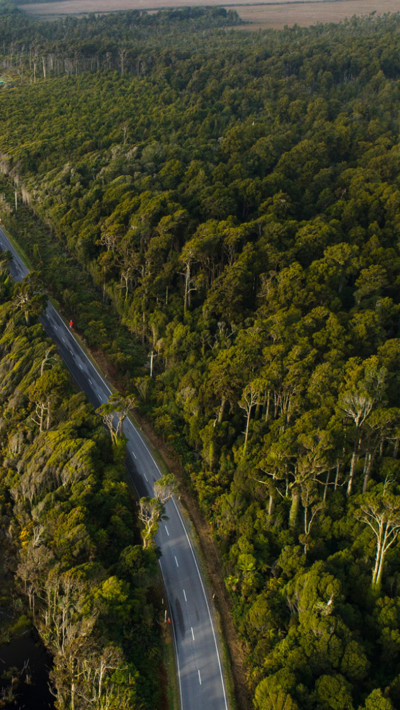Speak to our experts
Contents
Green, social and sustainable financing is on the rise, lifted by strong interest from investors, issuers and banks and about to be given a further boost by the zero carbon legislation and the Government’s promotion of national wellbeing.
We look at the factors at play, the funding options available, and what can be done to drive the market to its potential.
This is the fourth instalment in our Building resilience to climate change series. Previous instalments covered insurance, governance and local government.
The trend line – accelerating change
A nascent market in sustainable finance began forming last year, built on issues by Auckland Council and International Finance Corporation and on Contact Energy’s world-first green debt programme.
This year the pace has picked up dramatically, although New Zealand continues to lag behind Australia in terms of market innovation. Recent developments include:
- the Sustainability Financing Framework developed by Housing New Zealand and used by Kāinga Ora to issue its ground-breaking Wellbeing Bonds
- the feed-through effect into financing from the widening adoption of environmental, social and governance (ESG) imperatives1, for example the ANZ loan to Synlait this year, which was the first transaction in New Zealand to link interest costs to ESG performance
- the rising popularity of impact investment schemes, responding to an increased awareness of climate change risk among both fund managers and consumers, and
- the release by The Aotearoa Circle2 in November of the interim Sustainable Finance Forum report setting out a pathway to a sustainable economy and financial system in New Zealand. (A legal opinion commissioned by The Aotearoa Circle from Chapman Tripp is clear that these issues need to be on the governance radar).
Momentum is growing
Much more is going on behind the scenes, including greater attention to the investments required to preserve and enhance natural capital, provide healthy and energy-efficient buildings and meet the challenges of climate change adaptation and mitigation in coastal communities.
The international landscape is also evolving rapidly. The European Investment Bank (EIB) announced last month that it will scrap funding for fossil fuels, taking its massive balance sheet off the table and removing an important cornerstone for project financing. Commercial banks such as Mitsubishi UFG and BNP Paribas have made similar commitments.
There is a growing sense that the clock is ticking for brown investment – shifting green financing from a ‘nice to have’ to a matter of commercial prudence. This shift will deliver the further benefit of releasing more finance and research capability for environmentally and socially sustainable projects.
Regulatory impetus
Although most of the impetus is still market-led, regulatory agencies are becoming more active to ensure a coordinated response to climate risk and its impact on the financial system and markets. The EU is providing continuing leadership through its High Level Expert Group, which has put forward a range of measures aimed at both facilitating the sustainable finance market and underpinning its integrity.
In New Zealand, the Reserve Bank of New Zealand (RBNZ) has committed to a climate change strategy and invested in green bonds within its foreign reserve portfolio and the Treasury has been working on funding initiatives to create a step change in infrastructure financing and to confront the daunting costs associated with the climate change response.
The Financial Markets Authority (FMA) is currently consulting on green and socially responsible bond financing – an initiative which we hope will provide a clear sense of direction and support to the market.
What defines a green and sustainability instrument?
The defining characteristic of green, social and sustainability instruments is that they are issued under internationally recognised taxonomies which are intended to create objective criteria supporting use of the relevant label:
- to qualify as green financing, a project must deliver clear environmental benefits. A range of guidelines have been developed to define these, of which the best known are the Green Bond Principles created by the International Capital Markets Association (ICMA) and the Climate Bonds Standard
- social financing is geared to projects that address specific social issues or achieve positive social outcomes for vulnerable population groups. They will generally be consistent with and promote the United Nations Sustainable Development Goals and ICMA’s Social Bond Principles, and
- sustainability financing is used where funds raised can be applied to a mix of green and social projects.
Each issuer’s framework documentation will set the purposes for which the funding may be deployed, other performance indicators, and the standards compliance will be tested against.
Sustainability-linked loans – democratising the asset class
Sustainability-linked loans are designed to reward a borrower for demonstrating improvements to ESG performance over time.
They differ from their bond counterparts by featuring explicit pricing incentives depending on how the borrower performs against targets, are more broadly available than bonds (as most businesses lack direct access to debt capital markets), and they offer more flexibility for the borrower as they do not restrict the use of funds to specific projects.
Next steps
The concepts underlying green and sustainability instruments and sustainability-linked loans are not mutually exclusive. Internationally, we are starting to see bond issues featuring pricing incentives that have previously been identified with sustainability-linked loans. And Enel recently launched a “general purpose SDG linked bond”, which featured a pricing step-up that is triggered if a defined sustainability target is not met.
The credibility question – what’s in a label?
To provide substance to green and sustainability claims, and to ward off accusations of ‘greenwashing’, detailed taxonomies have been developed internationally to ensure rigour and consistency.
In addition, ‘deep green’ and other investors are increasingly seeking tangible evidence of issuers’ broader ESG credentials, rather than just accepting the green label at face value. Labels are recognised as important in this market – hence ‘transition bonds’ for projects that meet eligibility criteria, but where the issuer occupies a traditionally “brown” industry.
International regulators are also acutely conscious of the need to require ever-increasing standards to hit Paris milestones and to ensure the overall efficacy of the market in driving the necessary transition. The EU High Level Expert Group, for example, is proposing to establish an observatory focused on these questions.
There is certainly no gap in the law. In addition to the legal prohibition on false or misleading claims in relation to financial and other products, the law requires claims to be substantiated, even if true. This provides a powerful tool for the FMA and other regulatory authorities to keep the market honest.
Adrenaline rush building?
All the demand indicators look good for the growth of socially responsible finance in New Zealand.
Consumer appetite is strong:
- 95% of KiwiSaver investors think ESG factors should be considered when investing3
- 73% of respondents to a Colmar Brunton survey in 2018 said it was important for them to work for a socially and environmentally responsible employer, and
- responsible investment accounted for 72% of funds under management in New Zealand last year.4
The same is true for institutional investors. A recent poll found that one-third would forsake higher returns for better ESG characteristics, and 96.9% rated ESG as either a first or second order concern. Underlying this preference is emerging evidence that ESG portfolios outperform conventional ones.
And yet….
The uptake to date in New Zealand in terms of actual issuance has been gradual at best.
| Instrument | Issuer | Transaction |
| Green Bonds | Argosy | $100m to refinance existing bank debt that supports building upgrades to achieve low carbon impact office, retail and industrial buildings. |
| Auckland Council | $350m over two issues, supporting low carbon transport infrastructure. | |
| International Finance Corporation | $100m green Kauri bond to support investments in renewable energy, energy efficiency and other areas that reduce greenhouse emissions. | |
| Westpac | €500m to finance projects including green buildings, renewable energy, clean transportation, water and wastewater management, and climate change adaptation. | |
| Green borrowing programme | Contact Energy | New and existing bonds, commercial paper, USPP and bank debt, totalling $1.38b as at 30 June 2019. |
| Wellbeing Bond | Kāinga Ora Homes and Communities (previously Housing New Zealand) | To fund green and social projects aligned with UN SDGs and the Treasury’s Wellbeing Framework. New and existing wholesale bonds totalling $1.9b as at 30 September 2019. |
Toward a better regulatory framework
As noted above, support in New Zealand for green, social and sustainable financing is strong. So why has take-up and product development activity been relatively weak in comparison with like countries?
The missing piece of the puzzle may be lack of a clear regulatory framework. The FMA is now working to address this by producing disclosure guidance for bonds and managed investment schemes. But a key issue remains the FMA’s previous stance that green or sustainable bond offers may not be the ‘same class’ as existing quoted financial products, meaning that a separate Product Disclosure Statement (PDS) is required – an expensive proposition which creates a major hindrance to listed company participation.
Removing this obstacle would be reasonably straightforward. Whether or not that argument is won, the demand for green and sustainability financing will continue to grow because it is responding to circumstances which are of long duration and increasing urgency. It is part of a shift that is as fundamental as it is necessary.
1 The ESG movement is discussed in the governance article in our Building resilience to climate change series Climate change putting heat on directors.
2 Chapman Tripp partners Penny Sheerin and Emma Sutcliffe are active members of The Aotearoa Circle.
3 NZX and Wright Communication, ESG Reporting Uptake in S&P/NZX 50 Index and Investor Perspective 2019 September 2019.
4 Responsible Investment Association Australasia survey.

























































































































